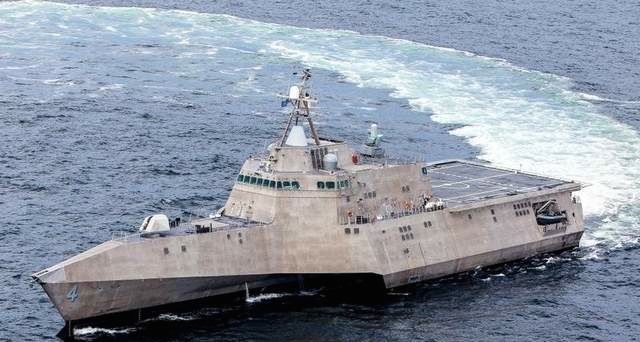Carter’s LCS Cut: Second Thoughts At OSD
Posted on

WASHINGTON: Defense Secretary Ash Carter’s decision to curtail the controversial Littoral Combat Ship program may not be the last word, according to several well informed sources. Those sources independently told Breaking Defense that the Office of the Secretary of Defense is divided over the decision cut LCS from 52 ships to 40. So is the Navy, which has had pro- and anti-LCS factions since the beginning.
My sources all have close ties to the Navy, so there may be some wishful thinking at work, but they tell a consistent story. Last month’s memo bypassed much of the usual vetting on its way to Secretary Ash Carter’s desk. Two of them traced the memo to hardline LCS critics in the powerful Office of Cost Assessment and Program Evaluation (CAPE).
The potential for debate inside OSD gives new hope and new credibility to Navy leaders defending LCS. At this week’s Surface Navy Association conference, both Navy Secretary Ray Mabus — a longtime LCS apologist — and new Chief of Naval Operations Adm. John Richardson repeatedly described the proposed cut as “predecisional.” At first that struck me as a technicality. Yes, the 2017 budget proposal hasn’t yet finalized and numbers could theoretically change, but what’s truly “predecisional” about a memo from the Secretary of Defense saying he’s made his decision? The answer, it seems, is that is a decision the secretary should reconsider.
Deputy Secretary Bob Work in particular may have mixed feelings, though we don’t know this for sure. On the one hand, Work is advocating the kind of investments in high-end warfighting — the “Third Offset Strategy” — that the memo funds at the expense of LCS. On the other, as former Navy undersecretary, Work also argued forcefully for the Littoral Combat Ship.
“There is a good deal of finger-pointing in OSD now,” one defense insider said. “Some of the direction in the original memo might be amended or altered when the FY17 budget comes out.”
“The SecDef letter was very strident,” said a retired senior officer. (For example, it says the Navy’s 2017 budget plan “fails” to heed OSD guidance, is “unbalanced,” and “creates too much warfighting and technical risk.”) But “I’m led to believe that was very narrowly a CAPE product,” the officer continued. “It may not have been widely staffed [i.e. vetted], so now there’s a little bit of backing and filling…. It did not get enough eyes on it.”
“I think there’s some regret,” the officer concluded. “They’re a little embarrassed, I’m told, [so] there may actually be some more middle ground” on how many Littoral Combat Ships end up in the program.
Certainly Navy leaders aren’t giving up the ship. “LCS — you have to help me sell the story on that,” Rear Adm. Peter Fanta, director of surface warfare, told the officers, industry officials, and analysts at the Surface Navy Association. “I’ve got it, it’s not perfectly tested… [but] it’s like every other ship. We’re building it, we’re deploying it, we’re figuring it out what it can do. [LCS-3] Fort Worth” — currently deployed out of Singapore — is doing amazing things.”
The Littoral Combat Ships operating from Singapore create a new US naval presence in the South Pacific, and Secretary Mabus in particular sees the relatively affordable ships — now under half a billion fully equipped — as crucial to building up the fleet so it can maintain patrols worldwide. “The most important accomplishment that we’ve had in the almost seven years that I’ve been here and for the Navy’s future is the our continuing ability to provide presence,” Mabus told the Surface Navy Association.
But skeptics in and out of the Navy say not all presence is created equal. To put it plainly, they say LCS lacks the combat power to deter adversaries like China, and that the Navy needs to invest more in high-end warfighting. It’s those investments — more missiles, upgraded submarines, stealth fighters — that Carter’s LCS cut is meant to fund.
Subscribe to our newsletter
Promotions, new products and sales. Directly to your inbox.
